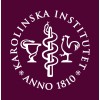
Contrast-Enhanced Stereotactic Biopsy
Breast CancerBreast Neoplasms1 moreContrast-enhanced mammography (CEM) is an emerging breast imaging modality that is based on dual-energy mammography and the injection of iodinated contrast agent. A typical CEM study consists of a low-energy image (equal to a FFDM image) and a recombined image (in which areas of contrast enhancement can be appreciated). However, the situation can occur that lesions are visible only on the recombined (contrast) images (in this protocol defined as 'recombined-only lesions' or ROLs). In these cases, we need to perform 'contrast-enhanced stereotactic biopsy' (CESB), in which CEM is used as a targeting modality. However, experiences with CESB are still limited and one of the most urgent questions that need to be answered is the amount of tissue sampling that is required to reach a final diagnosis. We aim to study where the cut off will be in terms of tissue sampling volume needed (i.e., number of biopsies) for a reliable diagnosis.

Treatment Patterns of Neratinib in HER2+ EBC in China
Breast CancerThis is a multicenter, open-label, single-arm, non-interventional study to investigate the treatment patterns of Neratinib in HER2-positive early-stage breast cancer in China

Metabolic Sodium MRI to Assess Early Response of Breast Cancer to Neoadjuvant Chemotherapy
Breast CancerTriple Negative Breast CancerNeoadjuvant chemotherapy (NACT) is administered to treat invasive breast cancer before surgery. It offers the opportunity to evaluate tumor response to treatment in aggressive disease, and guide additional therapies for patients with inadequate response, if detected early. Investigators propose to develop a sodium breast MRI technique that will allow to assess the early metabolic response of breast cancer to NACT, occurring before late structural changes can be detected with standard MRI. This study will scan 12 patients using 1H/23Na MRI at 7 T and DCE MRI with triple-negative breast cancer undergoing AC-T therapy (2 months of Adriamycin + Cyclophosphamide, then 3 months of Taxol): at baseline (pre-NACT); after the first AC cycle (2 weeks); after AC treatment (2 months); after complete NACT (5 months, pre-surgery).

Individualized Locoregional Treatment of Initially Biopsy-proven Node-positive Breast Cancer After...
Breast CancerIn clinically node-positive (cN+) breast cancer, preoperative systemic therapy (PST) is common. With increasing rates of complete tumour eradication, there is a need for de-escalation of locoregional treatment in the interest of decreased morbidity. In order to individually adapt postoperative therapies, axillary staging is crucial. Axillary lymph node dissection (ALND) comes at a high risk of arm morbidity. There is extreme divergence in the use of less extensive staging methods, i.e. targeted lymph node biopsy (TLNB), sentinel node biopsy (SNB) or both (TAD), and in the use of subsequent locoregional treatment, since prospective data are largely lacking. The main purpose of the European INDAX trial is to implement de-escalated staging and evaluate which regional treatment, individually adapted to the response after PST, is oncologically safe but least harmful. Population: cN+ breast cancer patients receiving PST, recruited 2021-2025. Staging by TLNB, TAD or SNB. Intervention: Negative staging (ypN0, Randomisation A, N=1433): no regional treatment. Positive staging (ypN+, Randomisation B, N=1513): no ALND but regional radiotherapy (rRT). Control: Randomisation A: rRT only. Randomisation B: ALND plus rRT. Outcome: Invasive disease-free survival (non-inferiority), arm morbidity and quality of life. Drug tests in whole-tumour organoid cultures, algorithm-based digital image analysis and gene expression analysis are performed to improve response prediction, facilitate tailoring of PST and increase eradication rates.

Pilot Study of Effects of Duavee® on Imaging and Blood Biomarkers In Women With Menopausal Symptoms...
Focus of Study is Healthy Women at Risk for Breast CancerPilot study to test feasibility of 6 months of Duavee® vs wait-list control in post-menopausal women symptomatic for hot flashes.

Atrial Fibrillation and Other Cardiac Arrhythmias and Diseases After Radiotherapy for Breast Cancer...
Breast CancerRadiation Toxicity3 moreThe goal of this interventional study is to evaluate the risk of atrial fibrillation (AF) and other cardiac arrhythmias and diseases in breast cancer patients treated with radiation therapy (RT). In addition to regular follow-up of patients by the radiation oncologist for 5 years, cardiovascular screening at the end of follow-up, combining the use of a connected watch and a cardiological check-up, could make it possible to identify precisely the types and frequencies of these sometimes asymptomatic, and probably underestimated, cardiac diseases. The main questions it aims to answer are: To assess the incidence of AF and other cardiac arrhythmias and diseases occurring within 5 years after RT To evaluate absorbed doses in the heart and cardiac substructures (chambers, conduction nodes, coronaries, pulmonary veins) based on auto-segmentation models developped with deep learning algorithms To investigate whether the risk of AF and other cardiac arrhythmias and diseases is associated with cardiac irradiation characterized by these absorbed doses (dose-response relationship) Participants will be included between 2023 and 2025, 5 years after their RT: Retrospective data collection will be based on a medical questionnaire designed to identify cardiac pathologies present prior to RT and those having occured in the past, between RT and 5 years post-RT. Cross-sectional data collection will be based on screening for cardiac pathologies using a connected watch worn for 1 month (silent AF screening) and a cardiology consultation (including ECG and echocardiography) to identify cardiac pathologies at 5 years post-RT possibly not identified in the retrospective data collection.

EpCAM and p53 Expressions in Infiltrating Duct Carcinoma of the Breast
Invasive Breast CancerBreast cancer represents the most frequently diagnosed cancer in women. It represents the 5th leading cause of cancer mortality all over the world. In Egypt, breast cancer represents the 2nd most diagnosed cancer among all population. But among Egyptian females it represents the 1st diagnosed cancer representing 32.4%. The main cause of death in breast cancer patients is tumor metastasis. Although only 5-10% of recently diagnosed breast cancer cases show metastasis to distant sites, but still there is a high risk for metastasis in patients with localized primary tumor following successful surgical management. Epithelial cell adhesion molecule (EpCAM) is a cell adhesion molecule. It modifies cadherin mediated cell adhesion and it induces epithelial cell migration and proliferation. Some authors elucidate that EpCAM is involved in metastasis. P53 is a known tumor suppressor gene involved in the control of cell cycle, DNA repair and apoptosis. It's one of the most mutated genes in cancer including breast cancer. Mutant p53 has a big role in tumor progression.

Molecular Signature for Breast Cancer
Breast CancerThe main objective of this study is to evaluate and compare the diagnostic performance of a diagnostic assistance tool for analysis of 5 prognostic and predictive markers of breast cancer (HER2, Ki67 Index, Mitoses, Estrogen Hormone Receptor, Hormone Progesteron receptors hormone of Progesteronereceptor) integrating an automatic analysis algorithm compared to a reference (gold standard defined as the rereading by at least two different anatomopathologists according to the standard method of care) in order to show the non-inferiority of the automatic analysis algorithm compared to this gold standard.

Characteristics and Treatment Trends of Young Breast Cancer in China
Breast CancerTo describe the clinical characteristics, the diagnosis and treatment, the survival status and change trend of young breast cancer patients in China from 2000 to 2015, and to explore and discuss the main influencing factors.

RWE About QOL and Compliance of Patients With OFS in China
Breast CancerQuality of Life1 moreThe purpose of this study is to assess the patient's feedback from using GnRHa depot formulation in postoperative, premenopausal patients with hormone receptor-positive breast cancer.
